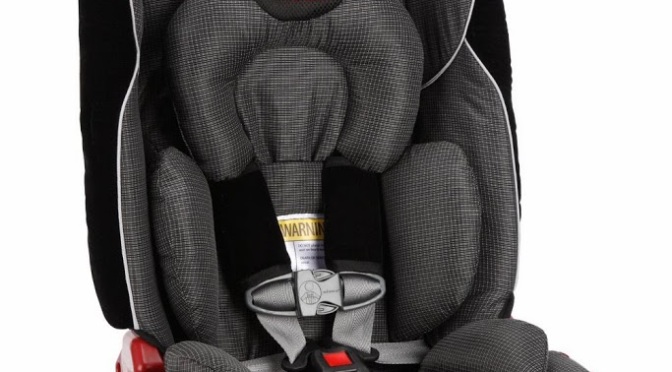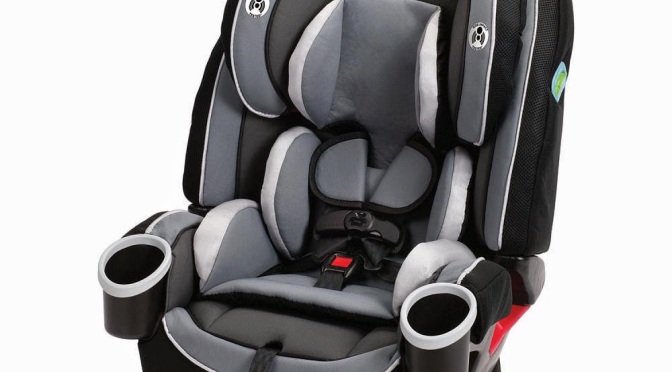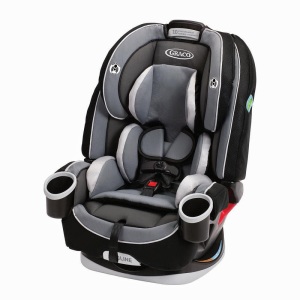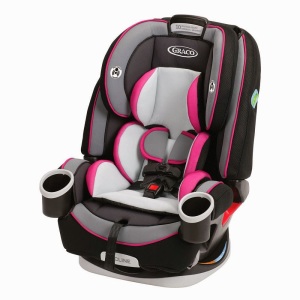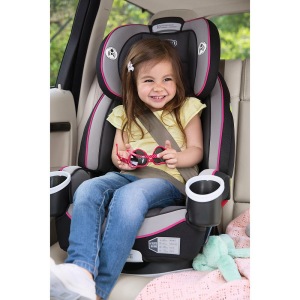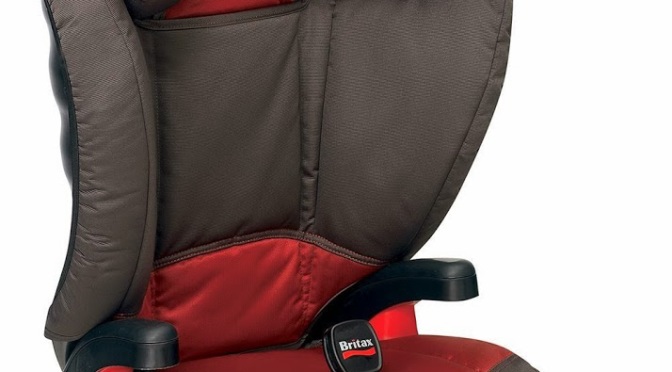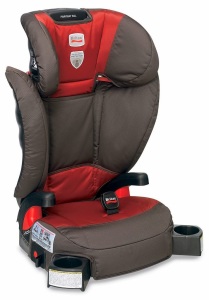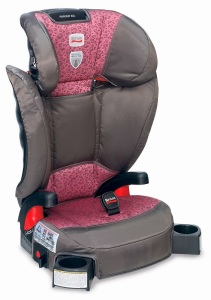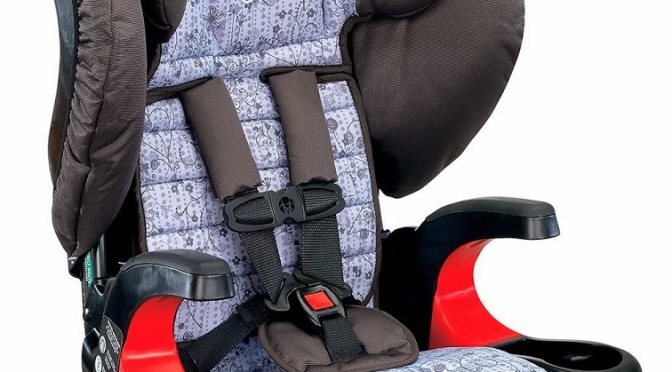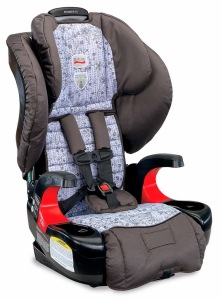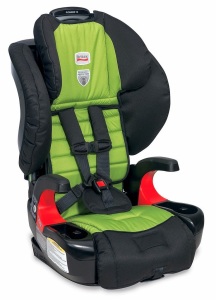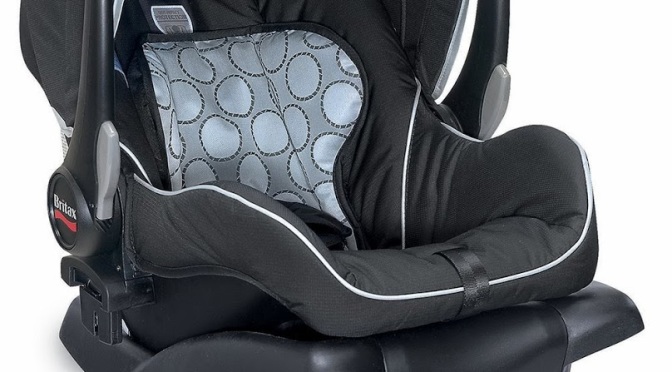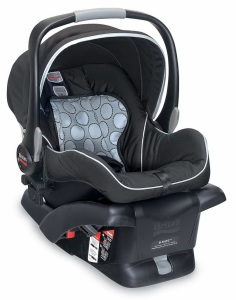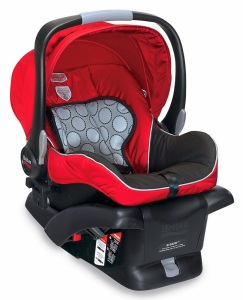2020 Update: Diono’s gone on a renaming rampage. The Radian R120 is now the Radian 3RX. Practically speaking, it’s the same seat. Buy it here and enjoy extended rear-facing ang a good amount of forward-facing time in one of the absolute narrowest convertibles on the market.
2018 Update: The Radian R120, as well as all other Diono convertibles, were recalled in late 2017 by Diono and new versions were released addressing a potential safety issue involving top tethers. Every seat manufactured from October 2017 onward has been modified to resolve the issue.
Diono has released a number of high quality car seats lately, with their current flagship being the Diono Rainier. However, there are other, older convertibles by Diono that are still available and capable of keeping many children safe through extended rear facing. Today we’re going to take a closer look at one of them: the Diono Radian R120 All-In-One Convertible Car Seat.
Compared to the RXT and R100, it slots in the middle with the weight and height restrictions of the RXT but with the shape and lack of protruding headwings characteristic of the R00. Overall, it’s a blend of both seats and still one of the finest examples of an extended-rear facing seat capable of fitting in any vehicle on the market in 3 across configurations. You can read my full review below, and you can buy the Radian R120 here.
Diono Radian R120 – What’s the big deal?
Everyone today is talking about the 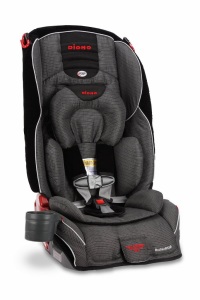 Diono Rainier, Pacifica, and Olympia. However, before they came out, Diono had already been establishing a tradition of narrow, high-weight car seats that are still worth considering even if they aren’t the newest seats on the market anymore. The Diono Radian R120 is an all-in-one convertible car seat, which means it can be used in several configurations, including as a rear-facing infant seat, a forward-facing seat, and as a booster. Despite its age, the Radian R120 is a car seat that should be on every parent’s shopping list. It’s essentially the same seat as the RXT but without the added head and side support, so this review will be quite similar besides a discussion about the parts not included in the R120 compared to the RXT. Skip down to the “Why Buy the Diono Radian R120?” section for the juicy bits.
Diono Rainier, Pacifica, and Olympia. However, before they came out, Diono had already been establishing a tradition of narrow, high-weight car seats that are still worth considering even if they aren’t the newest seats on the market anymore. The Diono Radian R120 is an all-in-one convertible car seat, which means it can be used in several configurations, including as a rear-facing infant seat, a forward-facing seat, and as a booster. Despite its age, the Radian R120 is a car seat that should be on every parent’s shopping list. It’s essentially the same seat as the RXT but without the added head and side support, so this review will be quite similar besides a discussion about the parts not included in the R120 compared to the RXT. Skip down to the “Why Buy the Diono Radian R120?” section for the juicy bits.
Diono Radian R120 Limits for Weight and Height
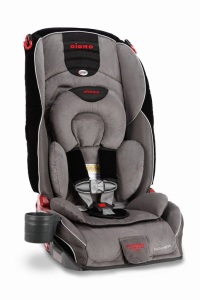 Rear-facing: 5-45 pounds, and up to 44″ in height. Your child’s head should not reach past 1.5″ below the top of the headrest. This is a standard requirement among the Diono all-in-ones.
Rear-facing: 5-45 pounds, and up to 44″ in height. Your child’s head should not reach past 1.5″ below the top of the headrest. This is a standard requirement among the Diono all-in-ones.
Forward-facing: 20-80 pounds, and up to 57″ in height. Your child should be at least 1, and it’s recommended that s/he is at least 2. Of course, research into car safety indicates children should remain rear-facing for as long as possible (the average is 4 years in Sweden, which posts the lowest child fatality rate on Earth), and after rear-facing, the child should remain forward-facing as long as possible.
Booster mode: 50-120 pounds, and up to 57″ in height. As with the latest Diono seats, the shoulders of the child must at least reach the 4th pair of harness slots. Remember that children should remain in booster seats until their seat belts fit them over the shoulder, across the chest, and flat on the upper thighs. This is known as the 5-step test, and your child should not leave a booster seat without it.
Buy the Diono Radian R120 on Sale with Free Shipping at Amazon.
Dimensions of the Diono Radian R120
The seat is 17″ wide at its widest point, which is at the shoulders. The seat weighs 26.5 pounds. Inside, it is around 14″ wide at the widest upper portion at the shoulders and slightly larger at the thighs.
Using the Diono Radian R120
The seat arrives folded nicely in a box that seems well designed for it. The seat arrives in a collapsed mode, so you can hook straps up to it and tote it around as a backpack, which works really nicely if you’re planning on taking it on an airplane. It’s also airplane compliant, which is great for travelers. All of the LATCH straps are held in the back, including seat belt clips that may be needed for older cars.The engineering of the seat is solid, and you can see where the newer generations of Dionos came from when you look at the Radian R120.
You might need to adjust the straps out of the box, but the learning curve is gentle. Keep in mind that you cannot install it in the center of your vehicle with a LATCH set up unless you have dedicated LATCH hookups there; this is common to almost every car seat on the market today in the United States. This means you’ll need to use a seat belt installation along with a locking clip for a middle seat install, and this might be a bit troublesome.
The Radian R120 is highly adjustable thanks to the harness range
There are 5 shoulder harness positions that range from 9″ on the low end to 17.5″ on the high end. The recline base must be used when the seat is in a rear-facing position. Because there are 5 different slots for harness height, most children are going to find a position that fits them comfortably for as long as they use the seat. You adjust the harness height from behind the seat by removing straps from the splitting plate and rethreading them into the desired slot. If your child is rear-facing, the slots need to be at or below the shoulders, while they need to be above for forward-facing. Diono is unique in that they do allow you to have forward-facing children with shoulders above the top shoulder harness slots as long as these children stay within the forward-facing weight limit and have the tops of their ears below the top of the car seat.
There is an angle adjuster that is frequently sold alongside the Diono line, as it helps cut down on the extremely large amount of space that the seat can take up when used in the rear-facing configuration. Depending on the size of your vehicle and the amount of space you need in the front seats, you may want to consider purchasing this. This is likely to be the case if you set the seat up directly behind the passenger or driver seats in the first row.
Buy the Diono Radian R120 on Sale with Free Shipping at Amazon.
Why Buy the Diono Radian R120?
This is the meat and potatoes of this car seat. The Radian R120 is one of a handful of seats in the United States that allows you to rear-face a child for up to 45 pounds. It’s not as good as it gets anymore, but it’s pretty close. Every pound is precious, as the longer you rear-face, the safer your child is. In the US, parents tend to turn their children around into the line of fire at 1. In Sweden, this typically isn’t done until 4. Children in Sweden are far less likely to die in car crashes than children in the US. It makes that much of a difference. This alone is reason enough to buy the Radian R120.
Besides that fact, the Radian R120 also includes a steel frame, although it does not include an aluminum reinforced headrest for reinforced head support or EPS foam around the child’s head and body to increase levels of side impact protection. The sidewalls are not as deep as those in similar Diono models, including its RXT sibling, which means you get slightly less side side protection. To be honest, this is the only real difference between the R120 and the RXT; if it matters to you, get the RXT. If it doesn’t, then the R120 will get the job done just as well.
The R120 might be a better Radian than the RXT
Some people even prefer the R120 to the RXT because some of the RXT wings had a bad habit of sliding down due to braces that were too weak to hold them in place over time. If you buy the R120, you never have to worry about this issue, much as people with cars with manual windows never have to worry about their window regulators going bad and leaving them with windows that won’t wind up in the middle of summer / winter / rainstorms / bad neighborhoods.
Finally, the Radian R120 is also simply an easier seat to install than most, due to its narrow width of 17 inches. That means it’s actually possible to install 3 across in a number of smaller vehicles. I also like the fact that it has a 10-year usable life when used as a booster and an 8 year life when used with a harness (remember, car seats do expire eventually), which is still among the longest in the industry right now, although not as long as the booster limits in the newer Dionos, which are 12 years. I also like that it is certified to use on airplanes when used with the harnesses.
What About the Newer Seats? – the Rainier in Particular?
The newer Diono seats are definitely flashier, come with longer product lives, and in the case of the Rainier and Pacifica, higher RF limits. However, none of this changes the effectiveness of the Radian R120. If you don’t need the newer belts and whistles or are looking to save a bit of money, I’d suggest looking seriously at the R120 alongside the newer Dionos.
The width point is particularly important to consider, as that’s an area where the R120 is clearly superior to the newer Dionos. I’ve compared both during installations, and there’s no question that the flaring out design of the sides of the newer Dionos makes them more difficult to puzzle with other car seats when trying to set up 3 across installations. It’s still possible to do 3 across with a new Diono, but not to the degree that it is with an older one like an R120 or an RXT. Keep this in mind if you’re driving a small class vehicle like a Prius, Civic, Corolla, Cruze, or any of the others I’ve reviewed here for 3 across compatibility.
The Radian R120 is an excellent car seat and, in my opinion, still one of the best currently available in the United States for children between zero and five. You can buy the Diono Radian R120 in the three colors above here. Canadians can buy the Radian R120 here.
 If you find my information on best practices in car and car seat safety helpful, you can do your shopping through this Amazon link. Canadians can shop here for Canadian purchases. Have a question or want to discuss best practices? Send me an email at carcrashdetective [at] gmail [dot] com.
If you find my information on best practices in car and car seat safety helpful, you can do your shopping through this Amazon link. Canadians can shop here for Canadian purchases. Have a question or want to discuss best practices? Send me an email at carcrashdetective [at] gmail [dot] com.

